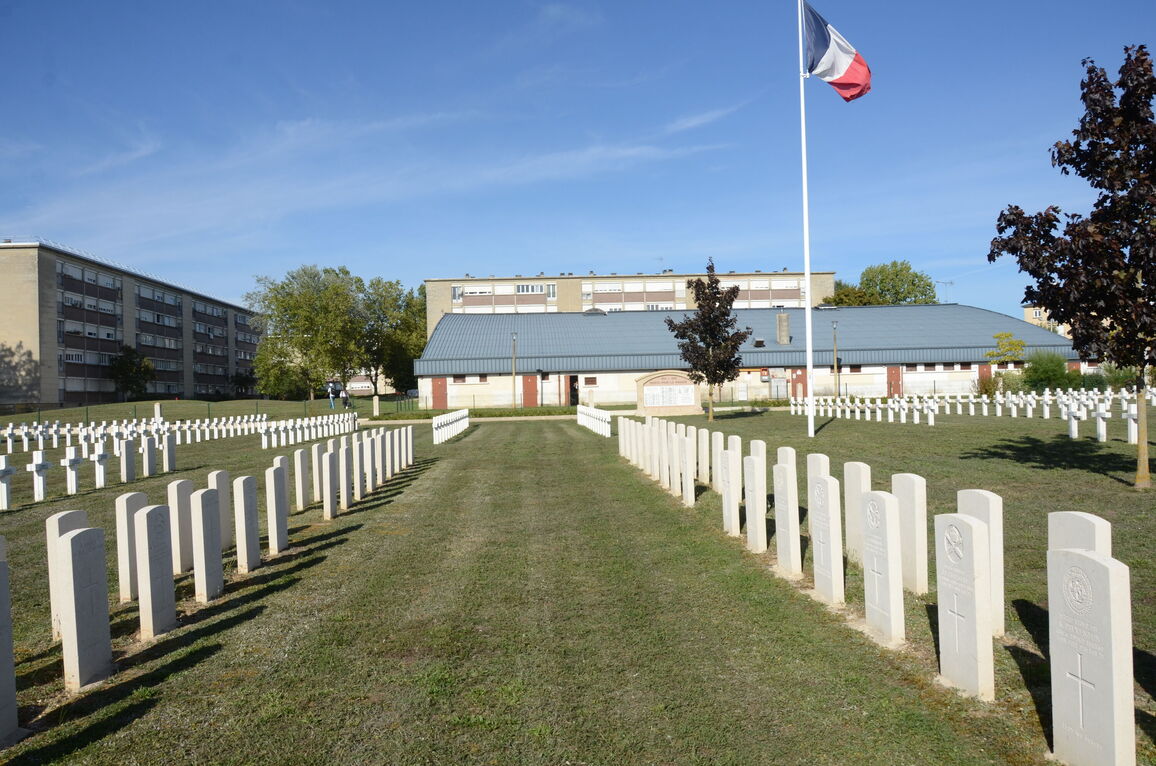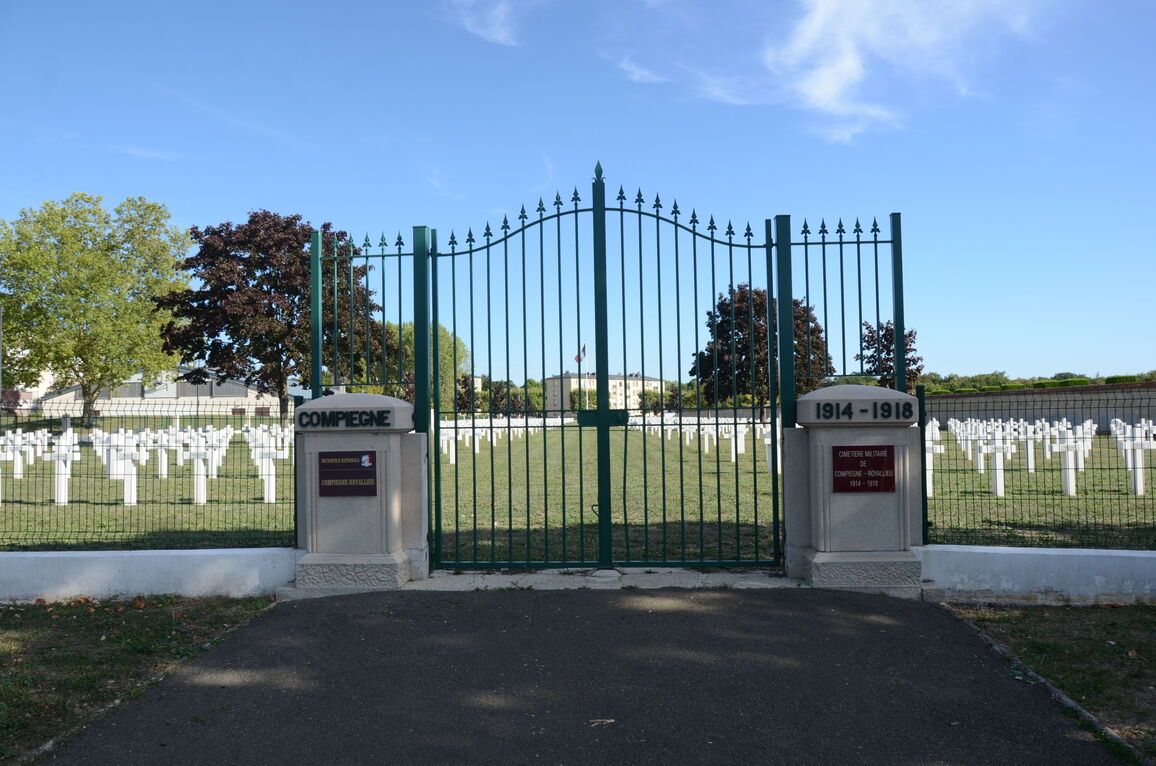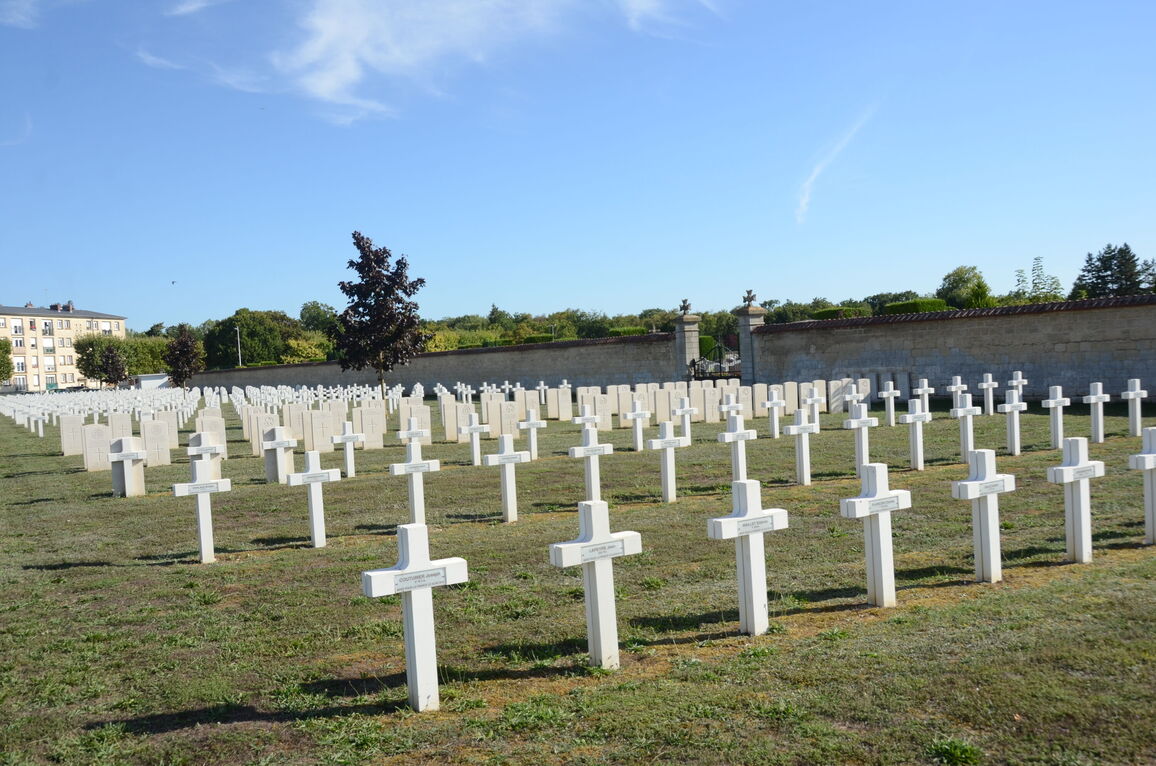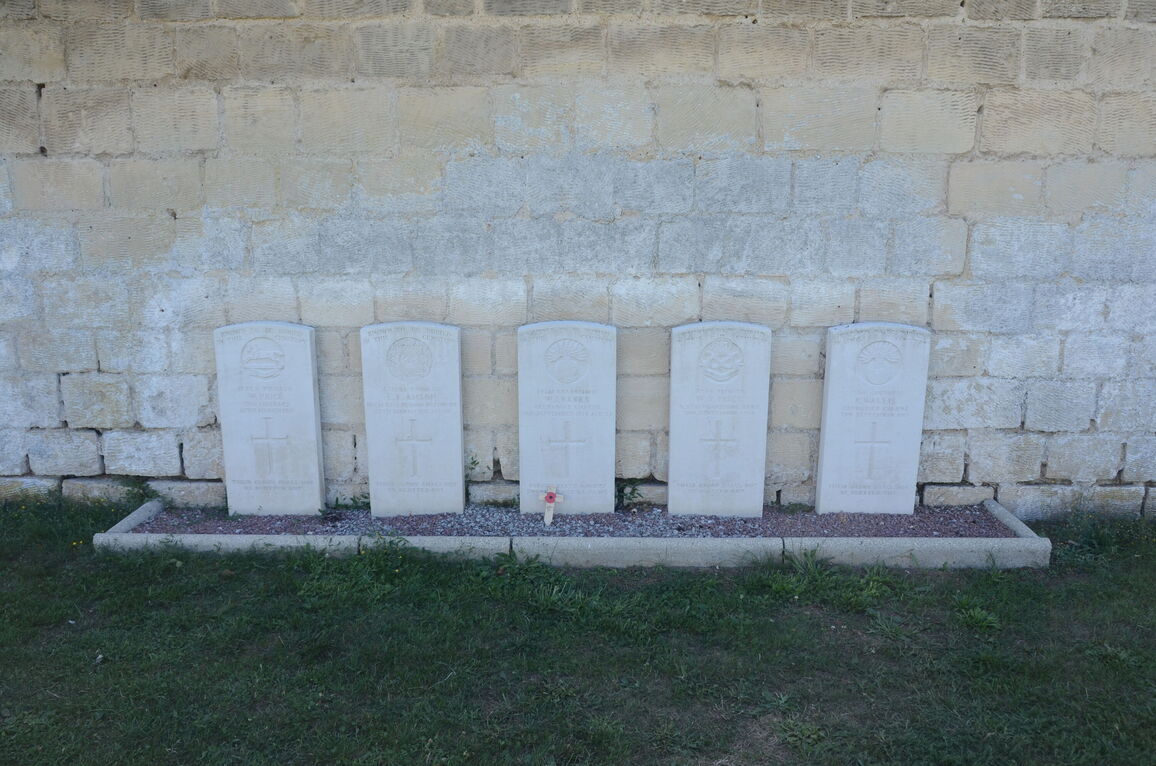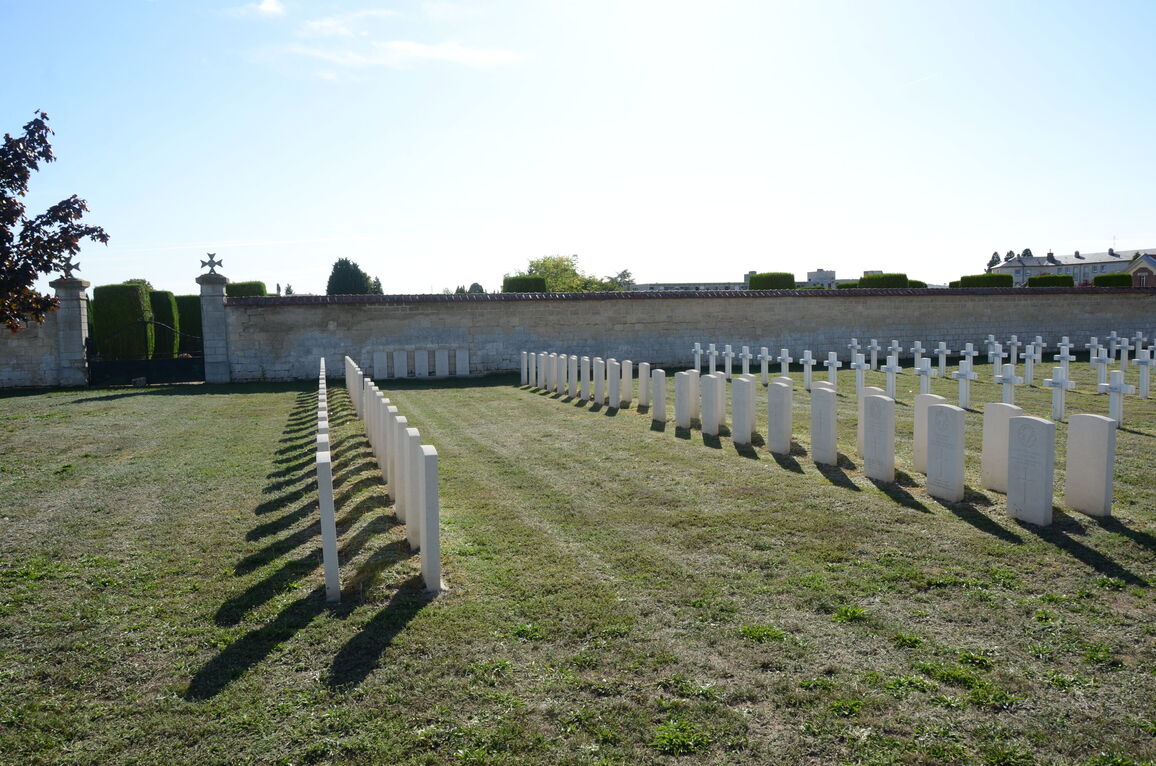Royallieu French National Cemetery, Compiegne
- Country France
- Total identified casualties 55 Find these casualties
- Region Oise
- Identified casualties from First World War
- GPS Coordinates Latitude: 49.40332, Longitude: 2.81353
Location information
Compiegne is a town and commune in the Department of the Oise with a railway station on the main line from Paris to Quentin. Royallieu French National Cemetery is on the north-east side of the South Communal Cemetery at Royallieu, on the road to Senlis.
History information
Compiegne was G.H.Q., B.E.F., from the 28th to the 31st August, 1914, and H.Q., R.F.C., from the 28th to the 30th. It became the French G.H.Q. ("G.Q.G.") in March, 1917, but in June, 1918, it was within 9.6 kilometres of the front line. At Rethondes, in the forest country East of Compiegne, is the site on which the Armistice with Germany was signed on the 11th November, 1918. Royallieu French National Cemetery was begun in February, 1918, by No. 16 French Hospital, then placed in the barracks at Royallieu, and it was completed after the Armistice. There are now over 80, 1914-18 war casualties commemorated in this site. Of these, over 20 are unidentified and special memorials are erected to five United Kingdom soldiers, known or believed to be buried among them. The following were the burial grounds from which British graves were taken to the French National Cemetery:- ATTICHY HOSPITAL FRENCH MILITARY CEMETERY, at the East end of the village, which contained 841 French, one British (of August, 1914), one Russian and 31 German graves. PIERREFONDS-LES-BAINS COMMUNAL CEMETERY EXTENSION, which contained 600 French, 72 British and 34 German graves. ST. CREPIN-AUX-BOIS FRENCH MILITARY CEMETERY, where one unidentified British soldier was buried. The town possesses two Communal Cemeteries, North and South. COMPIEGNE SOUTH COMMUNAL CEMETERY is a large and well kept cemetery at Royallieu, on the road to Senlis. In Plots VI and XIV, both on the North-West side of the centre path, are the graves of seven soldiers from the United Kingdom, who fell in September, 1914, and March-April, 1918, and three of whom are unidentified.


